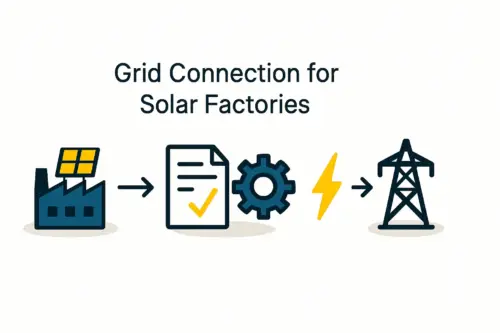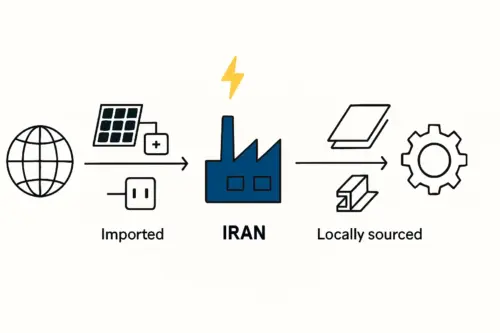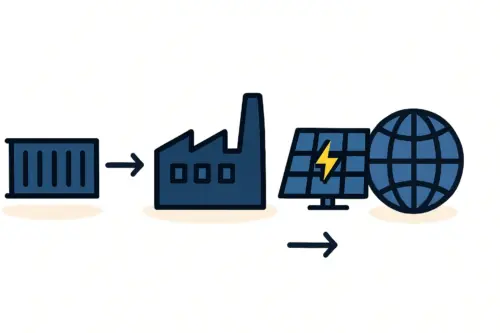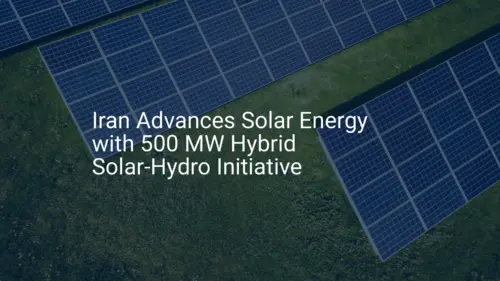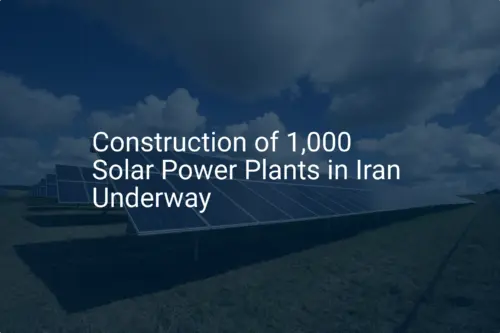An entrepreneur looking at a map of Iran sees more than a country; they see a vast expanse of sun-drenched land with over 300 sunny days per year. This immense potential for solar energy is a significant business opportunity. Yet, for the foreign investor, that opportunity comes with a critical question: “If my solar manufacturing plant is successful, how do I manage the local currency and reliably bring my profits home?”
These concerns are well-founded. While navigating the financial landscape of any new market is a challenge, Iran presents a unique set of variables—primarily the volatility of the Iranian Rial (IRR) and the legal framework for repatriating foreign capital. This article offers a clear-headed overview of these issues for business professionals exploring Iran’s solar manufacturing sector, outlining the risks, explaining the legal protections in place, and providing a structured approach to managing investment capital.
Understanding the Iranian Currency Landscape
Before investing, a solid understanding of the currency environment is essential. Iran’s financial system has operated with a multi-tiered exchange rate for many years, a system that can be a source of confusion for newcomers.
The Dual Exchange Rate System
For foreign investors, the most relevant distinction is between the “official” rate and the “open market” rate.
-
The Official Exchange Rate: This rate is set by the Central Bank of Iran (CBI) and is typically used for importing essential goods and services. Historically, it has been kept artificially lower than the market rate.
-
The Open Market Rate (or “Free Market” Rate): Determined by supply and demand, this is the rate most commonly used for everyday business transactions. It offers a more realistic reflection of the Rial’s value against foreign currencies.
The often-significant gap between these two rates is a critical factor in financial planning. All calculations for a solar module manufacturing business plan must clearly state which rate is being used to avoid substantial errors in forecasting revenue, costs, and profitability.

Managing Rial Volatility
The Iranian Rial has experienced significant volatility over the past decades, influenced by international sanctions, oil price fluctuations, and domestic economic policies. This volatility poses a direct risk to foreign investors, as profits generated in Rial could be worth significantly less when converted to Euros or Dollars.
For a business generating revenue locally—for instance, by selling solar modules within Iran—this exposure is constant. A sudden depreciation of the Rial could erode profit margins that seemed healthy just months earlier. Therefore, any sound investment strategy must include provisions for managing this currency risk.
Ready to make big Profits?
The solar Industry is Booming
WE HELP NEWCOMERS to the solar industry start their own solar module production line. Customers can make BIG PROFITS by selling modules and finding investors, without wasting money and time on things they don't need!
The Legal Framework for Foreign Investment: FIPPA
To encourage foreign investment and provide a degree of stability, the Iranian government established the Foreign Investment Promotion and Protection Act (FIPPA). This act is the cornerstone of legal protection for foreign nationals investing in the country and is administered by the Organization for Investment, Economic and Technical Assistance of Iran (OIETAI).
Obtaining a FIPPA license is a crucial first step for any serious foreign investor. This license is a formal recognition of the investment by the government, granting the investor a set of rights and protections that are not otherwise available. Based on the experience of J.v.G. Technology GmbH in turnkey projects, securing this license is a non-negotiable part of the due diligence process before committing significant capital.

Key Protections Offered by FIPPA
The FIPPA framework was specifically designed to address the primary concerns of foreign investors: the security of their capital and the ability to transfer profits. Key provisions include:
-
Guarantee of Profit and Capital Repatriation: FIPPA explicitly grants foreign investors the right to transfer profits, dividends, and the original invested capital out of the country in a foreign currency.
-
Protection Against Expropriation and Nationalization: The act guarantees fair compensation based on the real value of the investment immediately before any government seizure of assets.
-
Equal Treatment: FIPPA ensures that foreign investors receive the same treatment as domestic investors in most respects.
The Practical Process of Repatriating Profits
While FIPPA provides the legal right to repatriate profits, the process itself is governed by regulations from the Central Bank of Iran. The typical procedure involves:
-
Audited Financial Statements: The invested company must have its annual financial statements audited by a certified firm.
-
Formal Application: The investor submits an application to the OIETAI, including the audited reports, to certify the amount of profit eligible for transfer.
-
Central Bank Approval: Once OIETAI approves the application, it forwards the request to the Central Bank, which then allocates the required foreign currency for the transfer.
This process is bureaucratic and requires meticulous documentation. Delays are possible, making it vital for investors to work with experienced local legal and financial advisors to navigate the requirements efficiently.
Strategies for Mitigating Financial Risk
While FIPPA offers a legal safety net, proactive financial management is essential for long-term success. Several strategies can help mitigate the risks associated with currency fluctuation and repatriation.
-
Strategic Reinvestment: One effective approach is to reinvest a portion of Rial-denominated profits back into the local operation. This capital can be used to expand production capacity, upgrade machinery for the turnkey solar production line, or invest in local research and development. This strategy converts a currency risk into a growth opportunity.
-
Structuring Export-Oriented Operations: To minimize reliance on the local currency, investors can structure the manufacturing plant to be export-focused. Generating revenue in foreign currencies (e.g., EUR, USD) from international sales significantly reduces exposure to Rial volatility. This approach aligns well with setting up operations in Iran’s numerous Free Trade-Industrial Zones.
-
Phased Investment: Rather than committing the full investment sum at once, a phased approach allows an investor to test the operational and financial environment. Initial phases can be funded to achieve specific milestones, with subsequent investment tranches released upon successful profit repatriation from the earlier phases.

Frequently Asked Questions (FAQ)
What exchange rate is used for profit repatriation under FIPPA?
The regulations typically allow for profit repatriation at the prevailing open market rate at the time of transfer, as confirmed by the Central Bank. This is a critical advantage of the FIPPA license, as it protects investors from being forced to convert at the lower official rate.
Can 100% of profits be repatriated?
In principle, yes. FIPPA allows for the transfer of all net profits. However, investors should be prepared for the process to be time-consuming and require thorough documentation and approvals.
How long does the FIPPA approval process take?
The official timeline for a decision on a FIPPA application is within 45 days. In practice, preparing the comprehensive application and business plan can take several months. Investors should factor in a 6- to 9-month period for the entire licensing and approval process when planning their project timeline.
Are there any restrictions on the type of solar investment?
FIPPA is generally open to foreign investment in most sectors, including renewable energy and manufacturing. However, the investment must contribute positively to the Iranian economy, such as by creating jobs, transferring technology, or increasing exports.
A Measured Approach to Investment
Iran’s solar market holds undeniable potential, driven by abundant natural resources and a large domestic market. However, realizing this potential requires a thorough understanding of the financial environment, particularly currency management and profit repatriation.
The Foreign Investment Promotion and Protection Act (FIPPA) provides an essential legal framework that mitigates many of these risks. For the prudent entrepreneur, success lies in combining the legal protections of FIPPA with smart financial strategies. This means careful planning, engaging with local experts, and making a realistic assessment of the investment requirements for a solar factory.
By approaching the market with thorough preparation and a long-term perspective, foreign investors can position themselves to capitalize on the opportunities in Iran’s growing solar sector while effectively managing the inherent financial complexities.


